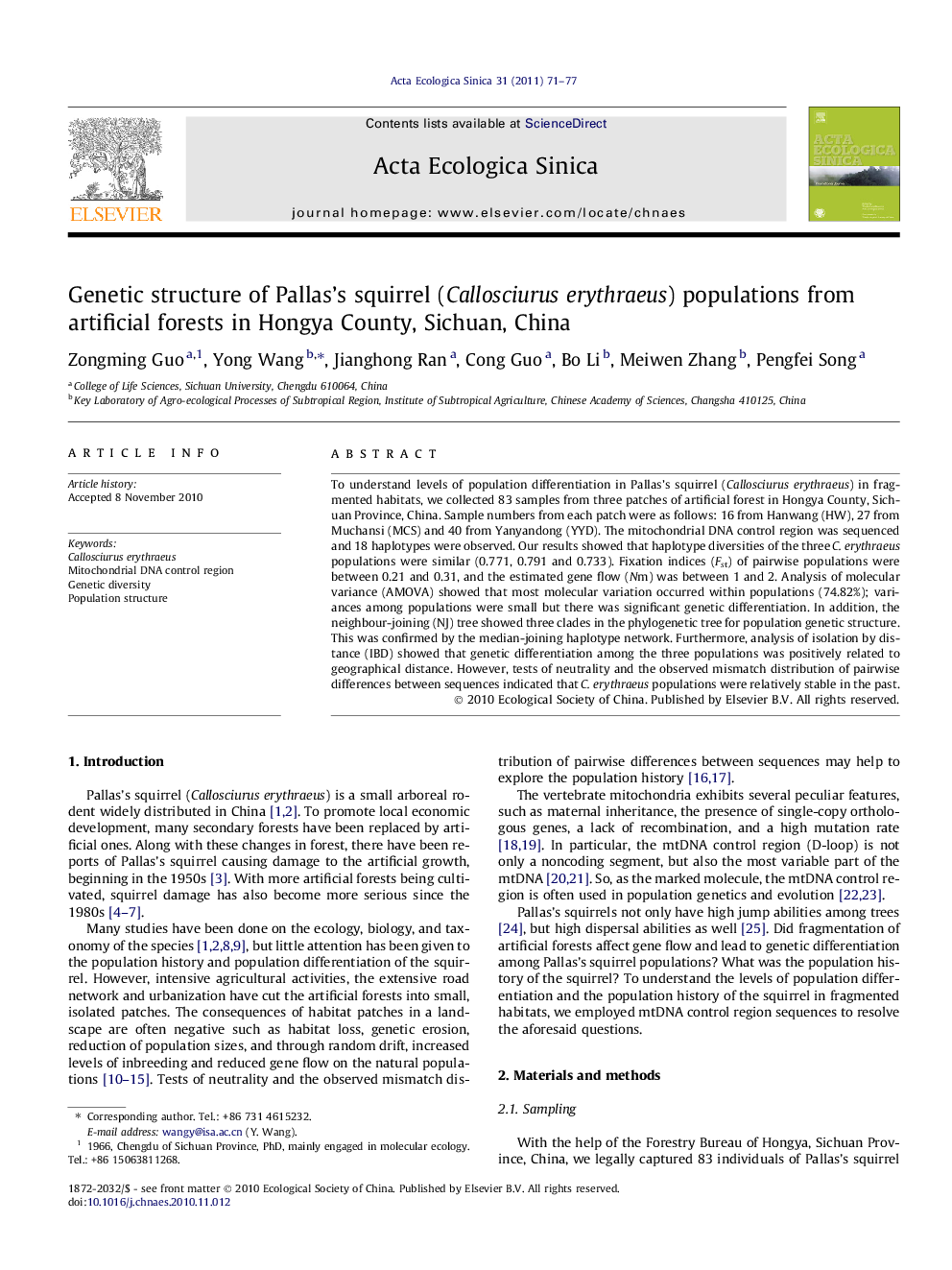| Article ID | Journal | Published Year | Pages | File Type |
|---|---|---|---|---|
| 4380092 | Acta Ecologica Sinica | 2011 | 7 Pages |
Abstract
To understand levels of population differentiation in Pallas's squirrel (Callosciurus erythraeus) in fragmented habitats, we collected 83 samples from three patches of artificial forest in Hongya County, Sichuan Province, China. Sample numbers from each patch were as follows: 16 from Hanwang (HW), 27 from Muchansi (MCS) and 40 from Yanyandong (YYD). The mitochondrial DNA control region was sequenced and 18 haplotypes were observed. Our results showed that haplotype diversities of the three C. erythraeus populations were similar (0.771, 0.791 and 0.733). Fixation indices (Fst) of pairwise populations were between 0.21 and 0.31, and the estimated gene flow (Nm) was between 1 and 2. Analysis of molecular variance (AMOVA) showed that most molecular variation occurred within populations (74.82%); variances among populations were small but there was significant genetic differentiation. In addition, the neighbour-joining (NJ) tree showed three clades in the phylogenetic tree for population genetic structure. This was confirmed by the median-joining haplotype network. Furthermore, analysis of isolation by distance (IBD) showed that genetic differentiation among the three populations was positively related to geographical distance. However, tests of neutrality and the observed mismatch distribution of pairwise differences between sequences indicated that C. erythraeus populations were relatively stable in the past.
Related Topics
Life Sciences
Agricultural and Biological Sciences
Ecology, Evolution, Behavior and Systematics
Authors
Zongming Guo, Yong Wang, Jianghong Ran, Cong Guo, Bo Li, Meiwen Zhang, Pengfei Song,
